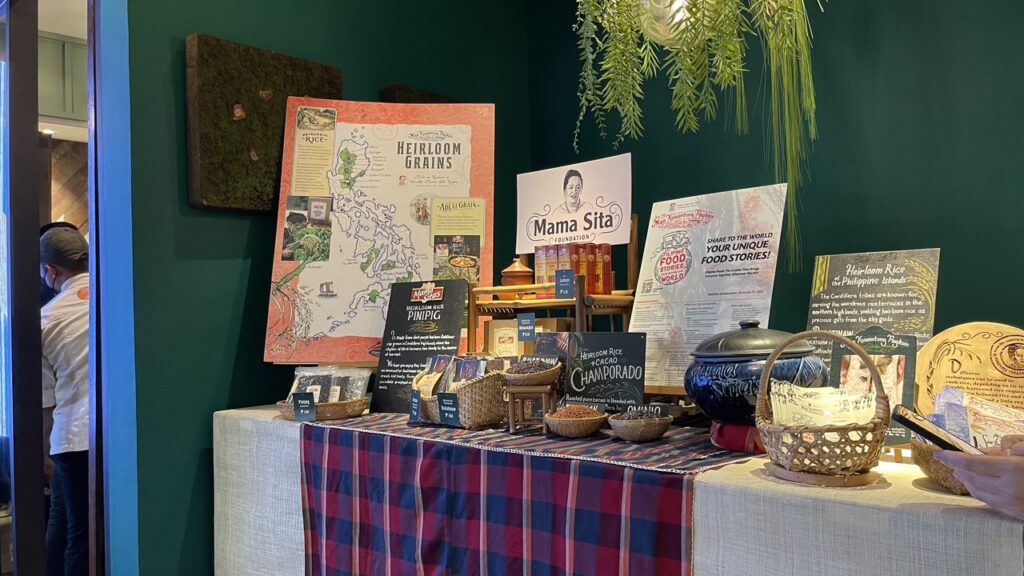The Mama Sita Foundation recently sponsored a Quiapo-themed heritage dinner at Chef Tatung Sarthou’s Lore Manila, where resource persons led by Dr. Fernando Nakpil Zialcita and Ige Ramos discussed the importance of Quiapo in the country’s cultural life and what the future holds for the historic district.
Before Ayala Alabang, Forbes Park, New Manila and even Ermita and Malate, there was Quiapo or, at least, a considerable portion of the district where most of Old Manila’s elite families and the intelligentsia resided. What was there life like back then? How did they live? How and what did they eat? What does the future hold for the once charming district that’s now polluted and congested, its past glory almost confined to the historical dustbin?

Dr. Fernando Zialcita, Yuan Gabriel Reyes, Joshua Imperio, Ria Tenido, Earl Joy Lopina, Simone Andrea Yatco, Clara Reyes-Lapus and Ige Ramos
The Mama Sita Foundation (MSF), together with a number of resource persons, tried to answer some of these questions when it recently sponsored “Peacetime Quiapo (1920 – 1940): Home Recipes from the Art Deco Era,” a non-profit dinner held at the Lore Manila in Bonifacio Global City. The event was curated by food writer Ige Ramos and organized by Dr. Fernando Nakpil Zialcita and his class at the Cultural Heritage Studies Program of the Department of Sociology and Anthropology of the Ateneo de Manila University.
The four-course meal, interpreted by Chef Tatung Sarthou, featured recipes from the illustrious families of Old Quiapo, then a cosmopolitan enclave that linked Asia, Europe, North and South America in the couple of decades leading up to World War II.
Mama Sita’s Balatinaw Heirloom Rice Champorado topped with Balatinaw Pinipig and Danggit bits was served for dessert. Clara Reyes-Lapus, presient of MSF, talked about the Foundation’s Heirloom Grains Project, which was established to support the Kankanaey tribe whose ancestors hand-carved the rice terraces out of the Cordilleras 2,000 years ago.
Keynoted by Dr. Zialcita, the program articulated the vision of converting the Quiapo district into a living heritage and pilgrimage zone with talks from
Claire Vitug of the San Sebastian Basilica Conservation and Development Foundation, Architect Roz Li of Bakas Pilipinas, Dr. Czarina Saloma-Akpedonu
of the Loyola School of Social Sciences of the Ateneo de Manila University and Congressman Joel Chua, chief proponent of the Quiapo Heritage Zone Act, which awaits deliberation at the House of Representatives.
Gemma Cruz-Araneta, writer, director, and former tourism secretary was among the event’s notable guests. Paintings of Quiapo-native Brian Villareal were also exhibited in the restaurant









